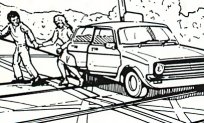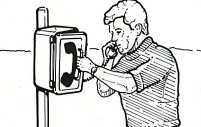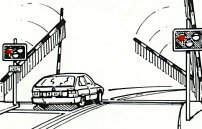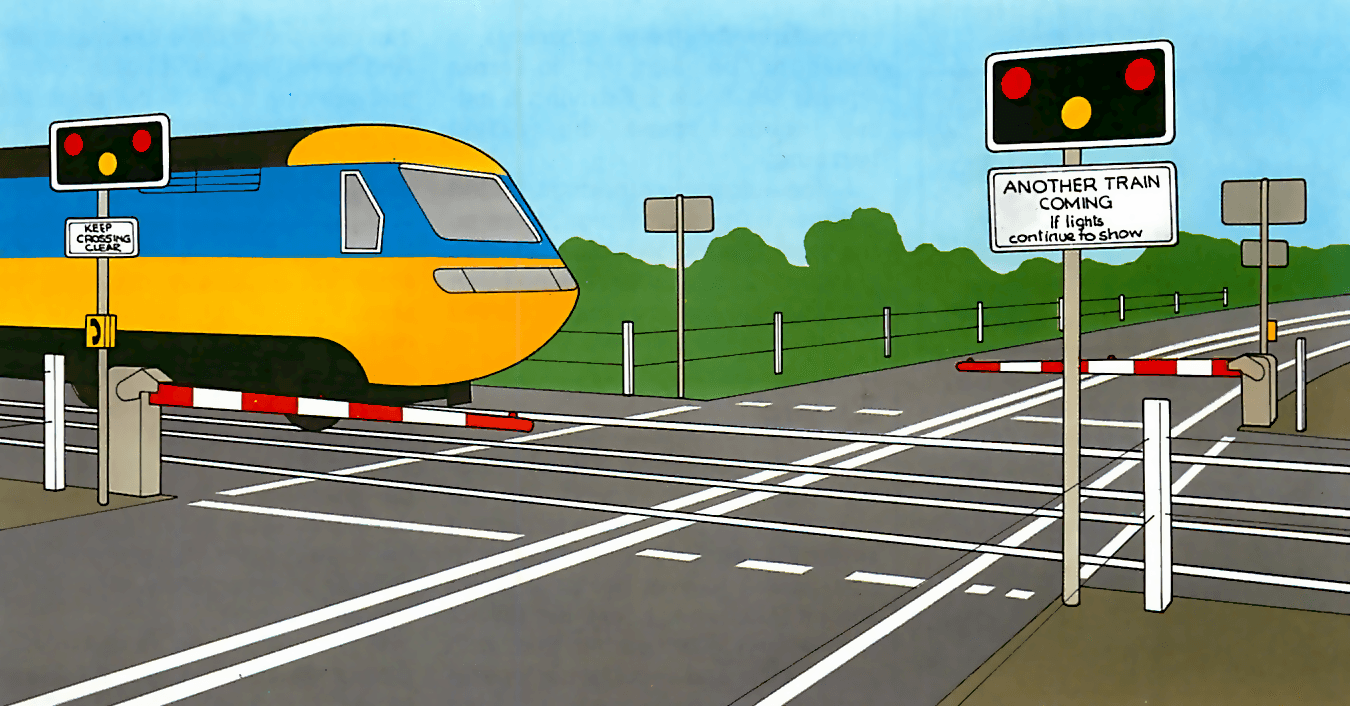Crossing train tracks safely
- In this type of crossing the barrier descends only over the left-hand half of the road on each approach side.
- Flashing lights are operated automatically by the train. Warning amber lights flash first then red ones.
- You should never try to drive in a zigzag round the closed barriers, against the lights. This could be fatal.
- As you drive over the crossing don’t be tempted to look up and down the track. Keep your eyes on the crossing.
- As you approach the level crossing and you see the barriers are closed, check in your rear view mirror for other traffic.
- Always be aware of other road users as you cross. Look out for pedestrians and cyclists who may also be crossing.
Manual control
The busiest crossings have full barriers that descend together, one on each side of the road, so that between them they block the whole road. The exit barriers do not come down until the entrance ones are in place, so a vehicle cannot be trapped between them.
There are some 600 of this type of crossing in Britain, of which about 400 are manually controlled. The others are operated remotely, but
usually have closed-circuit television so the operator can see when to bring the barriers up.
There are also about 650 old-fashioned manually controlled level crossings in which the gates are opened and closed by a signalman, either by hand or electrically.
Special telephones
Automatic crossings, with signal lights and no attendant, are equipped with a telephone so that you can warn the signalman if you get stuck on the crossing. The phone is usually located close to the crossing and is housed in a steel box. There should be direction arrows to indicate where it is.
If you are driving a very large or slow-moving vehicle you should phone the signalman to check it is safe to cross. Once you have crossed you should telephone the signalman again to let him know the danger is passed.
Automatic level crossings
Manually controlled crossings generally cause no problems. But the other type of crossings are automatic and can cause accidents.
Most automatic crossings have half barriers, which descend only over the left-hand half of the road on each approach side. They are operated automatically by the approaching train. An extra warning is provided by flashing amber lights, followed by flashing red ones. There are about 280 of these in Britain. The most obvious safety
precaution for these crossings is never to be tempted to cross against the lights by driving a zigzag course round the closed barriers.
Some automatic crossings, called ‘automatic open crossings’, have no barriers. The motorist must observe the signal lights, as there is no other warning that the crossing is closed in favour of the railway.
Types of level crossing
This type is the most common in the UK. It is controlled either manually or remotely with a closed-circuit camera. These have no barrier, relying solely on warning lights to alert drivers and other road-users to oncoming trains. Remember to go over a level crossing with enough speed for the vehicle’s own momentum to carry it safely across. Do not creep over in first gear – go over boldly at about 10mph (15km per hour). But do not race across – remember that, with subsidence and resurfacing operations, many crossings are anything but level. Do not drive on to a level crossing until the vehicle in front has left it in case the vehicle stops abruptly. And never ‘jump the lights’. Even if you see one train go by, there may be another coming quickly after. If you are in the position of being stuck on a railway crossing, you should follow the British Rail procedure (see sideline, left). If another vehicle is present, ask for a ‘bumper push’. A car with a manual transmission can usually be moved a short distance on the starter. Put the gear lever into first, check that the handbrake is off, and operate the starter, keeping it going until the vehicle is completely clear of the crossing barrier. If you are driving an automatic, it cannot be moved on the starter motor. The only hope then is to put the transmission selector, into Neutral and push, enlisting the help of anyone present. If you have to stop in the middle of a level crossing it is important that you try to follow the safety procedure advocated by British Rail: Do not try to start the engine. Get yourself and your passengers out of the car and clear of the crossing. Use the telephone to tell the signalman. If there is no train coming your can try to move the car. Even if you cannot move the car, get well clear of the tracks before the audible warning begins, the lights start to flash, or the barriers begin to descend.
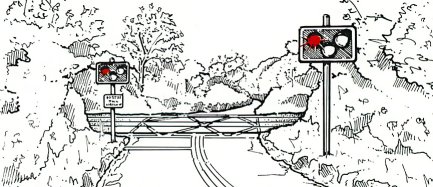
Speed
Emergencies
Emergency procedure
